Transforming a Mindset
Authored By
Brett Gardner, Director of Sustainability
Transforming a Mindset
The allure of vintage and reuse may be trending in some markets (think designer fashion, all things mid-century modern, vinyl records, and more) but not in the corporate workplace. Designers and their clients are often reluctant to reuse or repurpose materials, in particular furnishings or the existing architecture of a space chosen to become the client’s new workplace. Anticipating the best for their projects, the perception of reuse pales in contrast to the implied magic of the new, suggesting an innovative, future-forward, and impressive state-of-the-art design.
However, popular perceptions often fuel misleading illusions, perpetuating misconceptions and stigmas that lead to missed opportunities. Case in point, with many enterprises targeting sustainability and ESG goals (as the global struggle to reduce CO2 emissions continues), impressive reuse can equal, if not exceed, the function and aesthetics of the new while supporting sustainability and the circular economy. In pursuing the new with a blind eye to reuse, positive factors are frequently overlooked including the good bones and often superior construction of used furniture, which can be handsomely refurbished, as well as the appealing aspects of an existing architecture.
Within the design community and among its clients, championing the practice of reuse will require a significant shift in mindset. Clients typically engage designers for their expertise, creativity, and advice. If designers understand and enthusiastically promulgate the advantages for sustainability and design excellence of repurposing, reuse, and dematerialization (the use of fewer materials), supported by data and metrics, clients will feel comfortable with the shift—although some clients need little encouragement, already convinced of the benefits of reuse. More to come on that in this article.
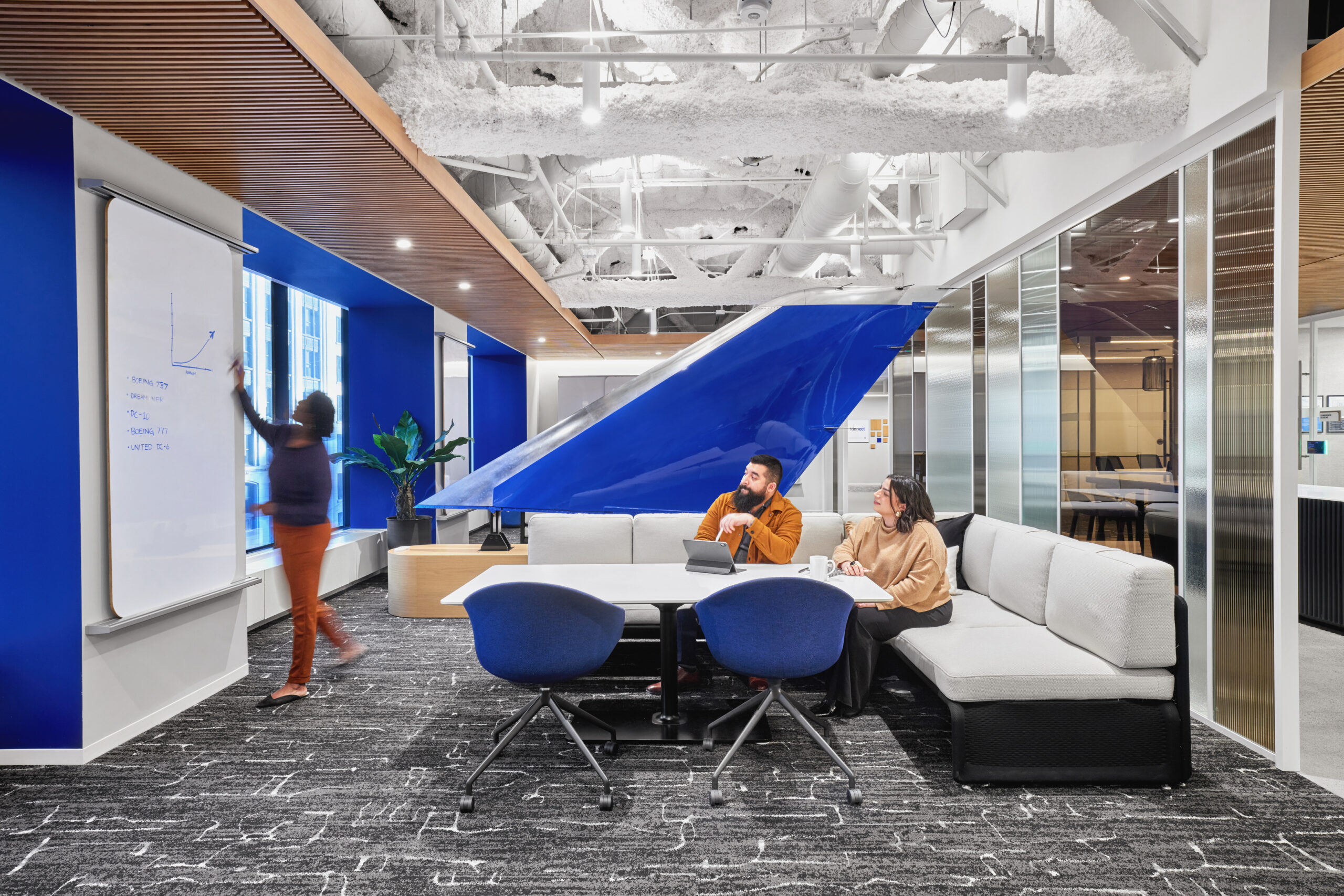
Changing Mindsets
How do you change perceptions, implement a persuasive fact-based approach, and socialize designing for reuse? Do we need a new playbook that clearly lays out a comprehensive strategy, covering all aspects of the reuse/repurposing process, projected costs, and integration with the circular economy? Yes, we do, as well as the development of a life-cycle diagram that addresses real estate development and design processes for reuse and dematerialization, identifying best practices/recommendations to support the circular economy. The socialization of case studies focused on successful projects that demonstrate the benefits of reuse is also needed. Planning for these tools is underway now.
Additionally, project stakeholders will need to support the reuse model since current design fee structures do not cover the time, knowledge, resources, and research this new direction requires. Without a willingness to pay for such actions (the situation is similar to the introduction of sustainability and wellness frameworks over the past 25 years), effective reuse/repurposing/dematerialization cannot be realized nor the benefits and cost savings clients could ultimately enjoy. The new design model will have to work for all stakeholders, which may include real estate owners, property managers, contractors, engineers, and an array of others in addition to the client and designer.
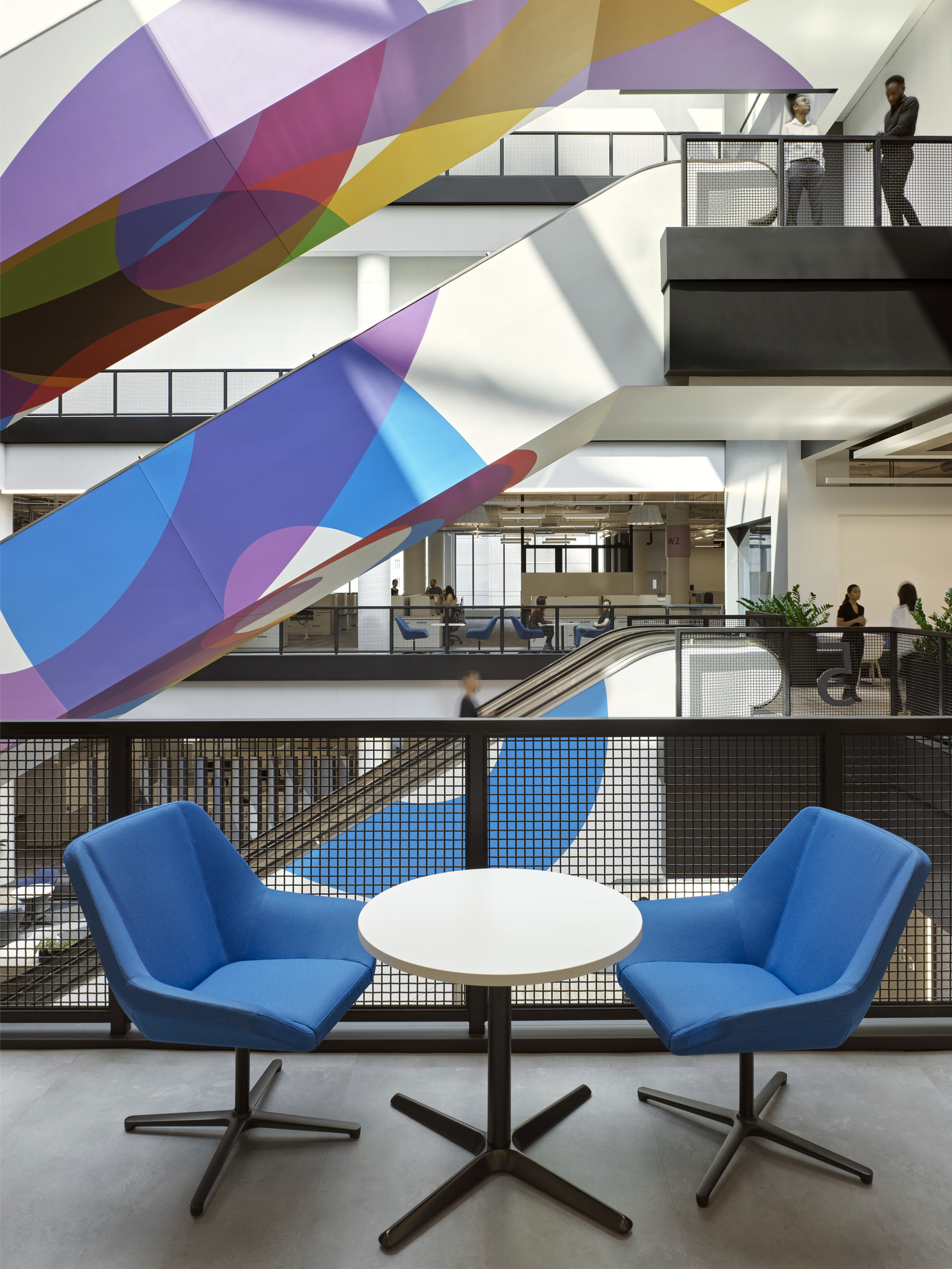
Actionable Now
Nevertheless, designers can take action now to repurpose both materials and established architecture. If the client is open to the concept of reuse, a walk through their existing space to identify assets for reuse is a starting point. Exploring those possibilities, as well as projected associated costs and a timeline, should occur early in the design process.
Plus, understanding the design strategy will help determine candidates for reuse. For example, if the design goal is a workplace focused on brand, culture, flexibility, wellness, and optimum production, then refurbished furniture—attractive, functional, and comfortable though not a key design feature—could be a good choice. In addition to furniture what other materials might be salvaged?
These are the kinds of questions and evaluations inevitably involved in planning the recent sustainability-oriented redesign of United Airlines’ Willis Tower, in Chicago, which saved tons of potential refuse from landfills through the refurbishing and repurposing of a variety of furnishings and features. The statistics are impressive: over fifty-five-thousand pounds of furniture diverted from landfills by refreshing certain workstation elements; the reuse of ceiling tiles to avoid 240,000 square feet of waste; and a manufacturer’s take-back program that absorbed unwanted carpet tile. In addition, systems furniture spines, panels, and some storage components, not to mention metal studs and gypsum board partitions, were reused along with meeting/conference tables and chairs. Considering that 12 million tons of furniture annually end up in US landfills according to the EPA, this and all recycling efforts are critically important.
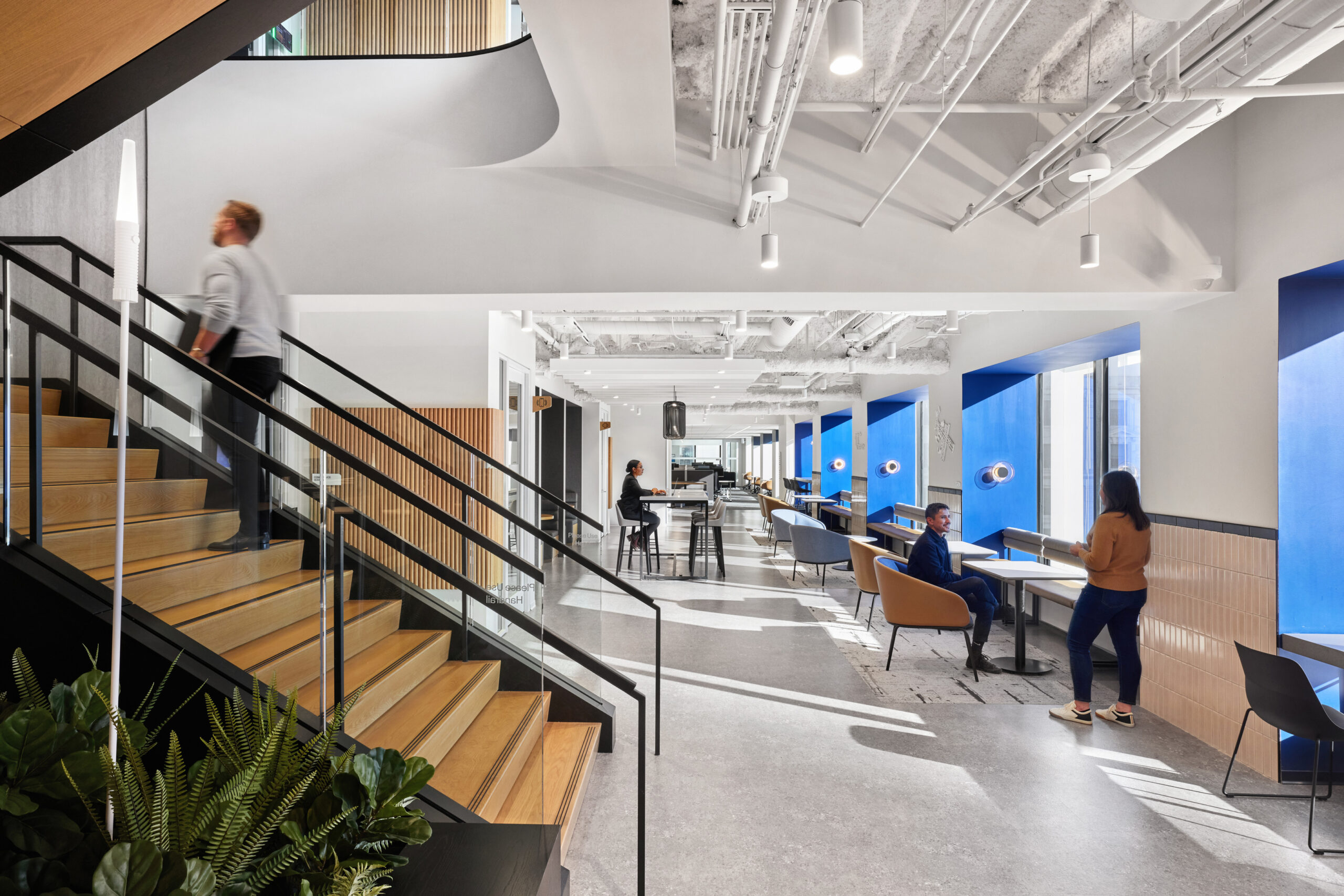
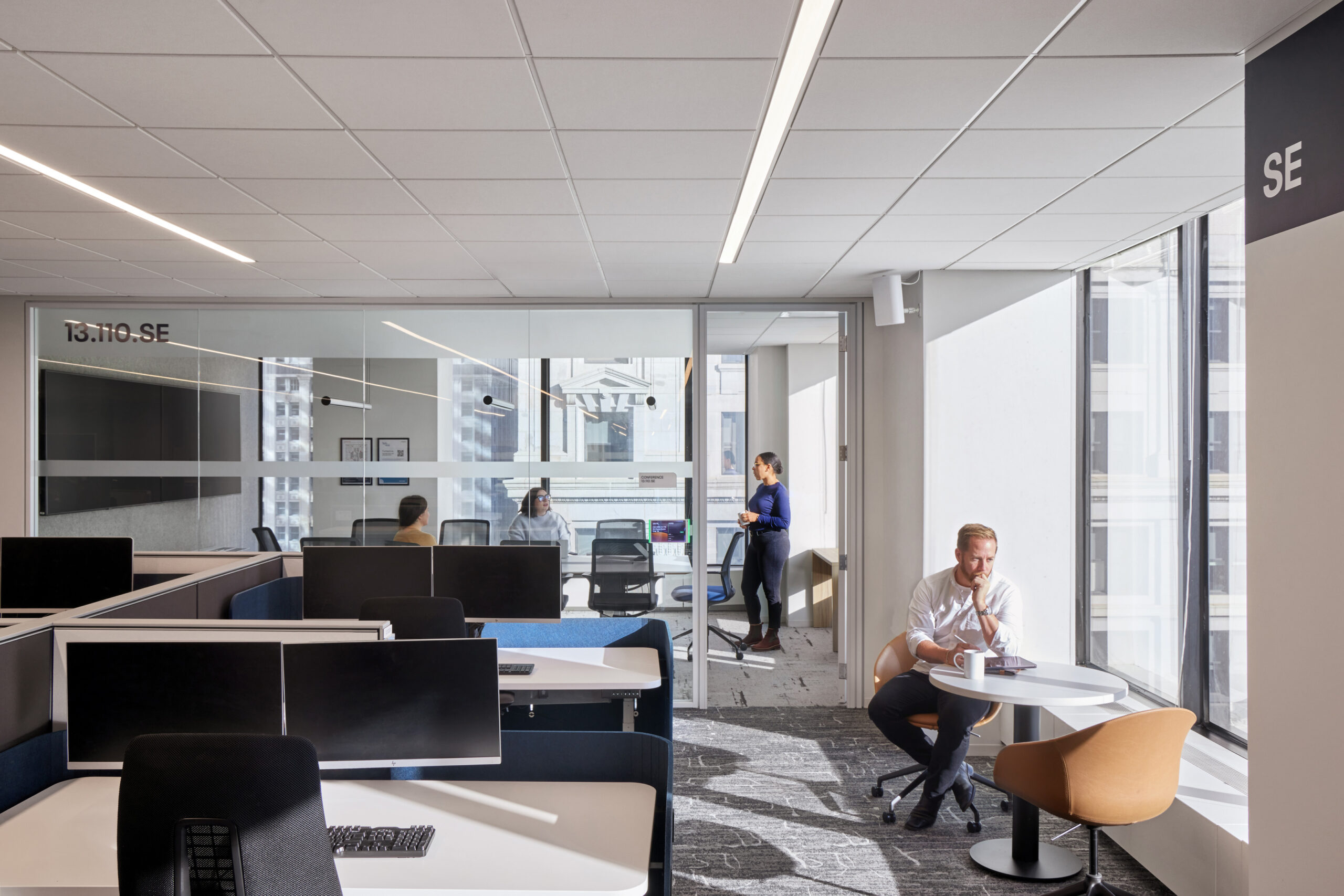
As a concomitant benefit, reuse as a design approach speaks positively to the workforce, especially younger generations that aim to join organizations authentically aligned with their social consciousness and sense of environmental stewardship. From location to building to interiors, a workplace that supports sustainability in the effort to mitigate global warming will resonate with a high percentage of an organization’s employees (at the United Tower that workforce population exceeds over 3000).
Further toward achieving sustainability goals, the reduction of materials (dematerialization) must be top of mind when designers specify project solutions. Visioning sessions and programming can help define preliminary design directions that require fewer materials and identify the impact of anticipated real estate changes that might increase or reduce future needs for space and reused furnishings. A new design’s requirements can be contrasted with the types and quantities of furnishings deemed appropriate for repurposing and gaps can be determined. A preliminary asset-reuse strategy should include next-life planning for the eventual integration of any repurposed materials into the circular economy.
Suppliers and Manufacturers
Strong relationships between designers, reuse suppliers, and manufacturers are essential; some exist now. Designers must be able to rely on vetted sources for reuse products that cover a wide range of types from furnishings to flooring to hardware, millwork, and more. Ultimately some repurposed materials may be used in different ways from their original intent. Provider showrooms should demonstrate reuse solutions and make inventory access easy, quick, and accurate. On their websites, an embodied carbon savings calculator could help communicate the benefits of choosing to refurbish.
If refurbishing the existing furniture is not suitable for the new design, a furniture-as-a service provider (FaaS) may have exactly what is needed in inventory. But as noted in a past post, refurbished furniture and building-product providers must issue warranties and quality commitments establishing the refurbished products as an equal or better value than purchasing new. Furthermore, a FaaS will take back any furnishings they provide for recycling in whole or part when a client is finished with them. Alternatively, if new materials are required, they too must come with certifications allowing their easy entry into the circular economy for recycling when the time comes.
Repurposing Existing Architecture
Rather than a new build, adapting the architecture of an existing space is an eco-positive strategy. One of the more ambitious adaptations we recently delivered is the repurposing of a four-floor former department store in Toronto, Canada as the new Bank of Montreal offices housing 3000 employees. With sustainability and community as primary objectives, the bank envisioned a vertical campus emphasizing visual connection with departments positioned as neighborhoods within the large floor plates. Traveling on the retained escalators, now major design features painted in patterns that set the project’s aesthetic, employees command compelling site lines. Colleagues can see one another both horizontally and vertically while traveling from floor to floor, encouraging interaction and a strong sense of relationship. Another original feature of the architecture, an atrium, is enhanced, bringing natural light into the campus. To further support sustainability, the unnecessary material of dropped ceilings at campus cafes is omitted, and higher ceilings throughout improve airflow and acoustics.
But many projects will benefit from a combination of reuse and new build-out. A good example is Farella Baun + Martel’s reuse of in-place elements at the site of its recent relocation. A staircase with a pantry/café at the top of the stairs was easily renovated and upgraded as a key design feature. Four existing boardrooms were also kept as well as several internal and perimeter offices that became the model footprints for planning additional offices.
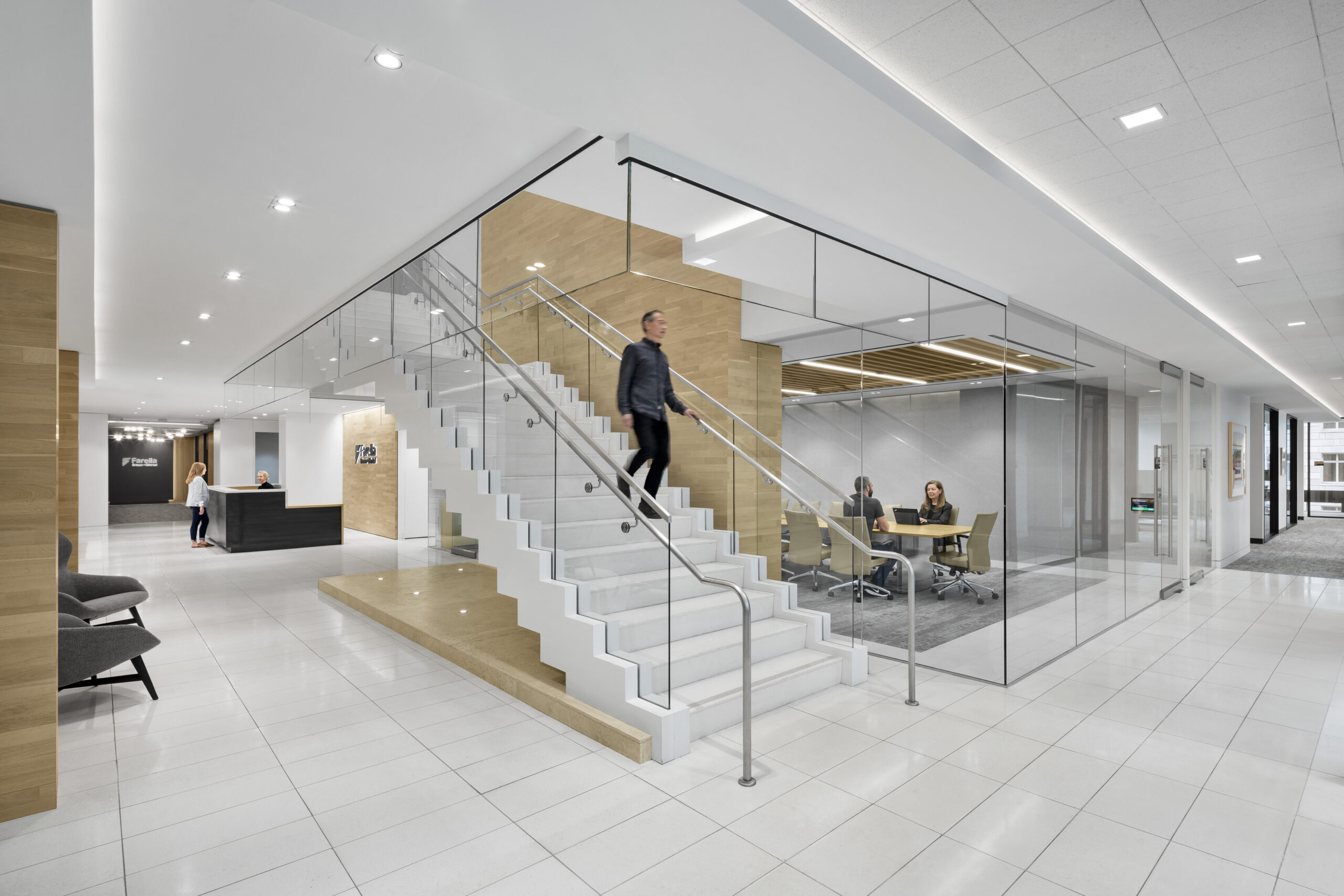
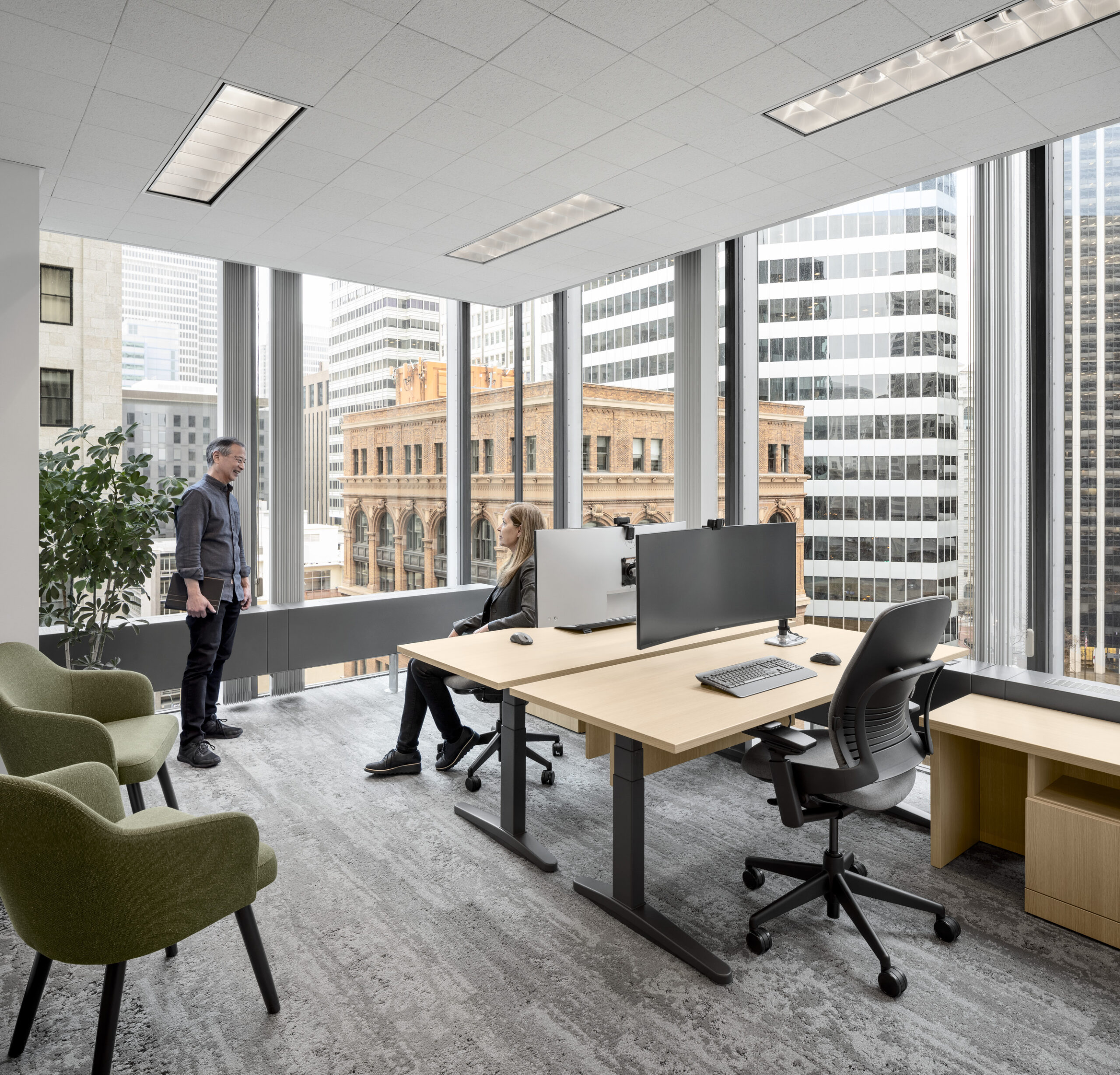
Conclusion
Clearly, aesthetics, function, and brand/culture building can be powerfully achieved through the reuse and repurposing of existing architecture, materials, and products. The design industry, in partnership with its clients, can create dynamic, impactful environments through circular economy strategies, which must be used to contain global warming. Responsibility and accountability make it critical to dispel the assumed magic of the new and establish a design approach based on reuse and refurbishment to support sustainability and create environments where people and the planet thrive.

